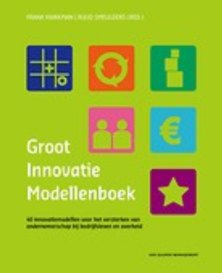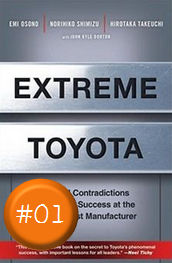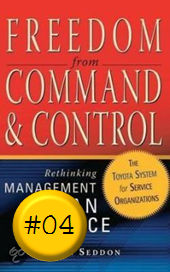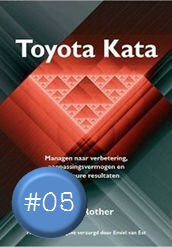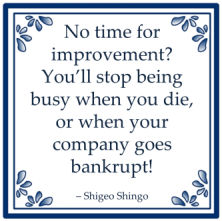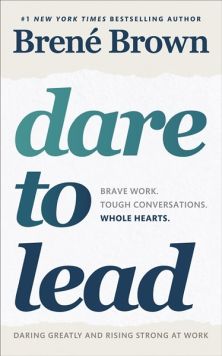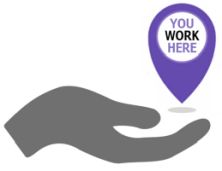
Bob Mosher en Conrad Gottfredson beschrijven in hun boek Innovative Performance Support - Strategies and Practices for Learning in the Workflow vier principes die de basis vormen voor het gebruiken van het proces als basis voor alle inspanningen om training en werkplekleren (Performance Support) te bieden.

Workflow process is the primary means for ensuring that performance is purposefully and effectively directed. It should be the backbone of all training and Performance Support efforts.
The following four principles support the use of process as the backbone of your training and Performance Support efforts.
Principle 1. Encode with process to facilitate more efficient retrieval.
Encoding is the process by which knowledge and skills are transferred from short-term memory to long-term memory. The ... way performers encode knowledge and skills influences the way they are best able to retrieve the same knowledge and skills.
When it comes to the workplace, people are applying what they have learned during the flow of their work. Workflow process, then, is the best way to encode skills.
Principle 2. Provide meaningful context
The hippocampus, a brain region in the temporal lobe, employs context cues to initiate recall from long-term memory. [So] it is not only the strength of memory that facilitates retrieval but context as well. ... In the world of work, context is defined by the flow of work. When workflow process is the backbone during the encoding (learning) stage, then what is learned can be retrieved readily as performers engage in their workflow - especially when there is Performance Support tightly aligned with the same workflow.
Principle 3. Associate with existing skill sets
... If you want rapid learning and quick recall, then make sure you establish logical linkage with knowledge and skills previously learned, and reinforce that linkage in how you organize your Performance Support solutions.
Principle 4. Use workflow visuals to help performers build mental models
Mental models are memory structures that facilitate thinking and help manage the integration of new learning with prior learning. These structures are stored in long-term memory and facilitate more efficient retrieval of information from long-term memory into working memory where they can assist thinking and help solve problems. These memory structures then provide the framework for encoding new understanding back into long-term memory.
Visual depictions of workflows, when designed and implemented properly, can help performers establish effective models.
Zie ook:
Alias: Werkplekleren
Bron: Innovative Performance Support - Strategies and Practices for Learning in the Workflow, Conrad Gottfredson, Bob Mosher

Managers think the numbers they look at constitute knowledge, they don't. They represent the score, they say nothing about the means. And acting on the score without knowledge of the means is the most common form of tampering.
John Seddon
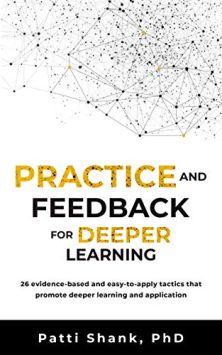
Practice and Feedback for Deeper Learning
26 Evidence-Based and Easy-To-Apply Tactics That Promote Deeper Learning and Application
Patti Shank
Bij Bol.com
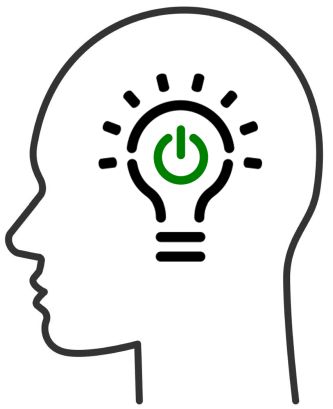
Martin Valcke beschrijft in zijn boek Onderwijskunde als ontwerpwetenschap - van leren naar instructie drie vormen van kennis die worden onderscheiden binnen de cognitivistische benadering van leren:

Soorten kennis
De cognitivisten benaderen kennis op een gedifferentieerde manier. Kennis is niet langer één uniforme categorie. Er worden types kennis onderscheiden:
(1) Declaratieve kennis
Definities, formules, wetten, verschijnselen, verbanden binnen kennisdomeinen. Dit wordt dikwijls ook conceptuele kennis genoemd. Deze kennis is gemakkelijk terug te vinden in kennisbronnen zoals boeken, woordenboeken, naslagwerken, enzovoort. Declaratieve kennis wordt relatief snel verworven, maar wordt ook snel vergeten wanneer ze weinig actief wordt gebruikt.
(2) Procedurele kennis
Methoden waarbij declaratieve kennis wordt gebruikt. Het kan daarbij gaan om zeer specifieke procedurele kennis (bv. schaatsen, fietsen, een formule vereenvoudigen), maar ook om zeer algemene procedurele kennis (bijv. encoderen van probleemelementen, probleemoplossingsvaardigheden, samenvatten ....). Procedurele kennis is niet gemakkelijk weer te geven met kennisbronnen zoals boeken. Het verwerven van procedurele kennis vraagt meer tijd.
(3) Metacognitieve kennis
Kennis over hoe we over onszelf denken, hoe we leren.
Bron: Onderwijskunde als ontwerpwetenschap - van leren naar instructie, Martin Valcke (Deel-1)
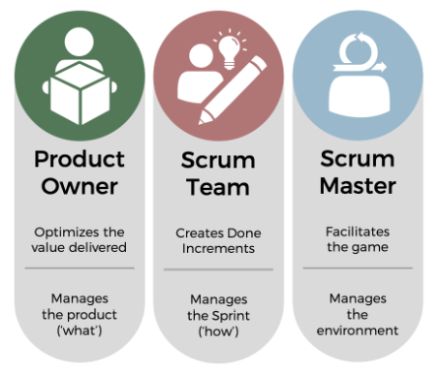
Zelfbenoemd Scrum-caretaker Gunther Verheyen beschrijft publicatie Moving Your Scrum Downfield - Six Essential Traits of the Game (pdf) treffend en compact de essentie van Scrum:

Scrum supports people in addressing complex challenges and derive value from them, with value being a very different purpose than volume is. Complex challenges are highly unpredictable and cannot be tackled with prede?ned or copy-paste solutions. Scrum is simple in the sense that it de?nes no more than a limited set of rules. That set is suf?cient to devise a way of working speci?c and ?tting to time and context, and continually optimize toward creating the most valuable outcomes. This does imply revising, adding, and improving work, management, people, and organizational practices.
(...)
In a nutshell, Scrum requires a Scrum Master to foster an environment where (repeatedly):
1. A Product Owner orders functions and solutions for value against an overarching product vision.
2. A Scrum Team creates valuable Increments of work against an overarching Sprint Goal.
3. All players ?gure out what to work on next and how to best organize for that.
(...)
Scrum’s DNA Scrum is grounded in the management principles of Self-organization and Empiricism. They are entwined and form Scrum’s DNA.
Self-organization asserts that the people undertaking complex work know best how to organize for that work. No external forces can do that better for them. Scrum sets the boundaries within which people are invited to use their intelligence and creativity to act with agility and collaboratively optimize for valuable outcomes.
Empiricism (or empirical process control) asserts that forward-looking decisions in complex work are best based on experience, observed results and outcomes of experimentation. Scrum implements empiricism via its methodical approach of inspection and adaptation upon transparency of the work being undertaken and results being produced. Scrum combines self-organization and empiricism by engaging people in sharing or acquiring insights and skills to collectively perform complex work, while employing an iterative-incremental approach to make the best possible progress. It requires players to regularly stop, re?ect, gather feedback, and learn from observation and inspection in order to continue or change course as needed, re-organize, improve, adapt.
(...)
How the six essential traits of the game are indicative of Scrum coming to life:
1. Scrum Is Simple, Yet Suf?cient. The players unfold the potential of Scrum by using the simple rules that apply and explore how tactics, interactions, behaviors, and the six essential traits make Scrum work.
2. Scrum’s DNA. The players form a self-organizing unit around the challenge of collectively creating observable, Done Increments of work, while employing empiricism to manage all work and progress.
3. Players Demonstrate Accountability. The players contribute to valuable system outcomes through spirited collaboration, and sharing and challenging rules, agreements, skills, practices, ideas, and viewpoints.
4. Transparency for a Flow of Value. The players use the Scrum artifacts to uphold transparency over all work done and work to be done, manage for a ?ow of value and preserve the ability to capitalize on unforeseen opportunities.
5. Closing the Loops. The players regularly and repeatedly close the many intertwined loops within a Sprint toward full closure by the end of a Sprint and preserving unburdened adaptability at the macro level.
6. The Scrum Values. The Scrum Values of Commitment, Focus, Openness, Respect, and Courage take prominence in the behaviors, relationships, actions, and decisions of the players and their ecosystem.
Bron: Moving Your Scrum Downfield - Six Essential Traits of the Game, Gunther Verheyen
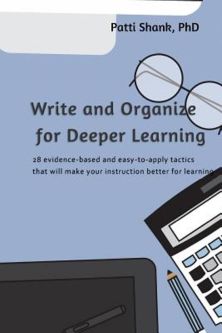
Write and Organize for Deeper Learning
28 Evidence-Based and Easy-To-Apply Tactics That Will Make Your Instruction Better for Learning
Patti Shank
Bij Bol.com

If you want people to do a good job for you, then you must design a good job to do.
Frederick Herzberg

![]()











